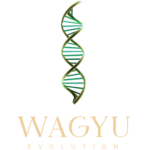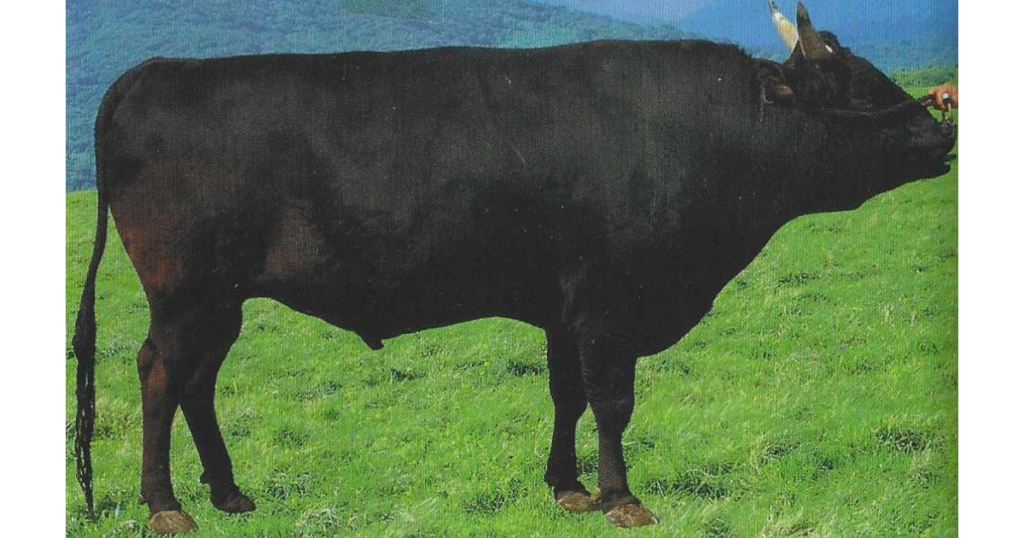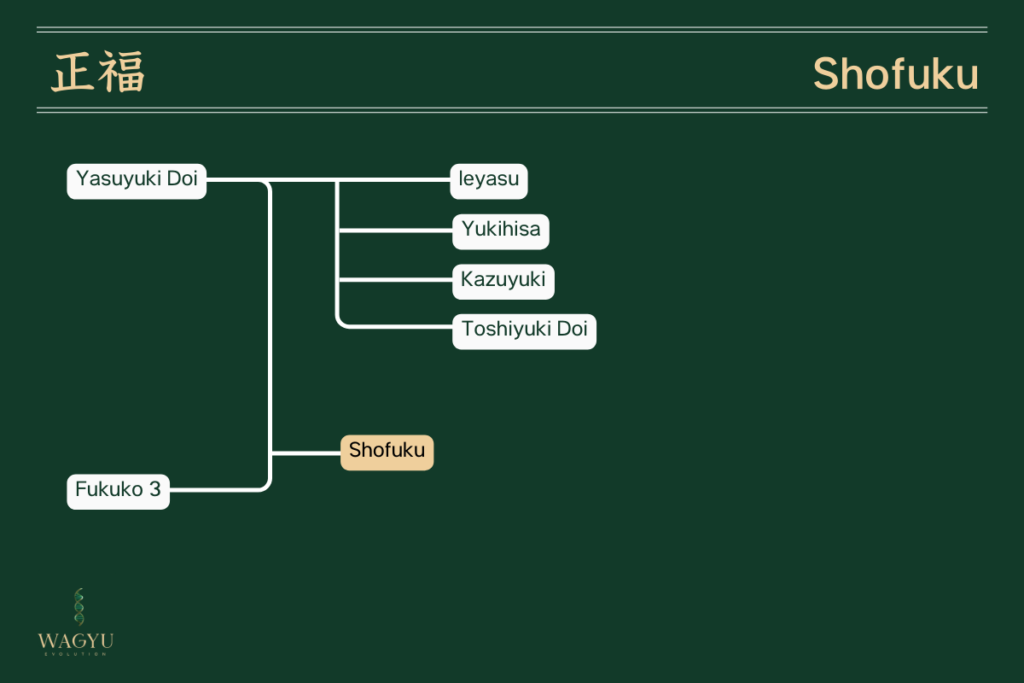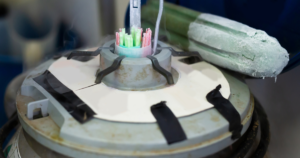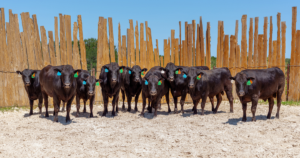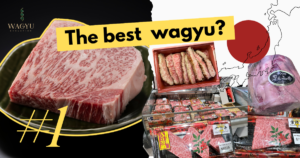Shofuku: The Bull that Most Exemplifies the Hyogo Lineage
Table of Contents
* Note: This is not a direct translation of Kenichi Ono’s “Top 100 Famous Beef of Japan [Revised Edition]” but a summary that was written using it as a direct source.
Early Life
Among the breeding bulls that were exported from Hyogo Prefecture in the 1980s, the bull that most exemplifies the Hyogo lineage is ‘Shofuku,’ which is being used in Tono City, Iwate Prefecture. This bull was born on June 8, 1985, at the home of Mr. Masao Sakaguchi in Muraoka Town, Hyogo Prefecture. The father, ‘Yasuyuki Doi,’ was expected to be the successor of ‘Anmi Doi,’ and the mother, ‘Fukuko 3,’ was also sired by ‘Anmi Doi.’ This breeding bull was produced through a sibling mating of brother and sister. After being trained by Mr. Shozo Gojo, a breeder, he has been used by the Tono City Agricultural Cooperative (now Tono Regional Agricultural Cooperative) since July of 1987.
Initially, he had a rough temperament, and there were problems such as short gestation periods for its offspring, but currently, the bull has become more docile, and most of its offspring now have normal births. By the end of 1996, about 120,000 straws of semen had been produced, and he was still active until his death on June 30, 1997.
Features
Strengths: Strong genetic influence, meat color, fine texture, good bone tightness, marbling in the thighs, facial appearance, coat quality, good meat yield, flavor, etc.
Weaknesses: Growth rate, ribeye area, adaptation to group feeding, late maturity tendency, fat necrosis, short legs, etc.
Shofuku is a breeding bull that possesses both the greatest strengths and weaknesses of the Hyogo lineage. While it excels in meat quality, it has a significantly poor growth tendency. As a result, while the fattening performance of crossbred cattle with maternal lines from the Yutaka or Tohoku lineages is particularly stable, the performance of crossbred cattle with Hyogo maternal lines is notably inconsistent.
Thorough breeding to leverage its characteristics is the key to establishing the value of ‘Shofuku.’ Furthermore, in the central region of Iwate Prefecture, it is well-suited for early fattening and early maturity, such as with ‘Hokoku 7-8.
The fattening method for this type of Wagyu is active and cases where ‘Shofuku’ calves are shipped without being fully finished have become particularly noticeable, indicating a need for improvement.
Pedigree Background
Shofuku’s father, Yasuyuki Doi, was highly anticipated in Hyogo as a successor to Anmi Doi (DG0.80 kg, Fat Cross +4.3 old method) at the time of inspection. However, despite the good performance of fattening cattle, the advantages did not translate well to the breeding bull, highlighting flaws such as thin shoulders and a narrow ribeye area. As a result, no candidates for breeding bulls with Anyuki Doi as their father were included in the breeding bull auctions of 1996 and 1997.
Amidst this, Shofuku and the four successful breeding bulls from Yasuyuki Doi’s progeny—Ieyasu (Hokkaido), Yukihisa (Iwate), and Riritsu Doi (Shiga → Kagoshima)—stand out as notable exceptions.
Shofuku’s mother, Fukuko 3, is the granddaughter of Tada Yasu Doi, and her grandmother, Kanehime 2, is a progeny of Tada Yasu Doi. Anyuki Doi also traces its paternal lineage to the grandchildren of Tada Yasu Doi, making Shofuku a breeding bull of close inbreeding within the Tada Yasu Doi lineage up to the third generation.
This close breeding is believed to be a major factor in its strong genetic influence. In such breeding bulls, it is common for their abilities to remain high even in their later years, so with careful selection of mating partners, Shofuku is expected to continue to perform well.
Major Successor Bulls
- Ieyasu (Tokachi Livestock Artificial Insemination Center, Hokkaido)
Ieyasu used mainly in Hokkaido for fattening, is a progeny of Anyuki Doi. It exhibits good growth and minimal variation in meat quality, making it a promising candidate for Wagyu breeding.
- Yukihisa (Iwate Prefecture, JA Iwai East)
Yukihisa, used primarily in the Iwai region of Iwate Prefecture, benefits from the good performance of Wagyu and F1 progeny from the grandfather Fukusho. It is somewhat regrettable that it has slightly thin shoulders and longer legs.
- Riritsu Doi (Kagoshima Prefecture, Tokushige)
This bull, initially used in Shiga Prefecture and now active in the Satsuma region of Kagoshima Prefecture, has a good compatibility with progeny from the 20th generation of Heisei Shige and Heisei Shige’s offspring. As a Hyogo line, it has shown strong health and decent growth performance. It is somewhat regrettable that many of its offspring tend to have a longer body shape.
In addition, attention is focused on Wakou (from the Foundation), Taniyuki 8 (Kagoshima), and Yoshiyuki (Iwate), with hopes for significant success.
Breeding Considerations & Recommendations
Recommmended Lines to Pair
The major drawback of ‘Shofuku’ is its growth rate and unsuitability for group feeding. To compensate for these issues, breeding with particularly gentle and high-growth bulls from the 7th Itozakura line or the Kedaka line is recommended. Crossbreeding with the Hyogo line should be avoided, except for purposes of breeding stock production.
Potential Risk In The Future
The mother of Shofuku’s father is the renowned bull Mitsufuku, which produced the notable bulls Oomizo and Mitsufuku 2. The excellent Hyogo Prefecture cattle of recent times are almost entirely dominated by this maternal lineage. In the future, there is a risk that Hyogo line cattle may become overly reliant on close relatives of Mitsufuku, so it is essential to pay attention to the coefficient of inbreeding and avoid producing weak cattle.
References
小野健一. 日本名牛百選〔改訂版〕(pp.85-92). 肉牛新報社.
